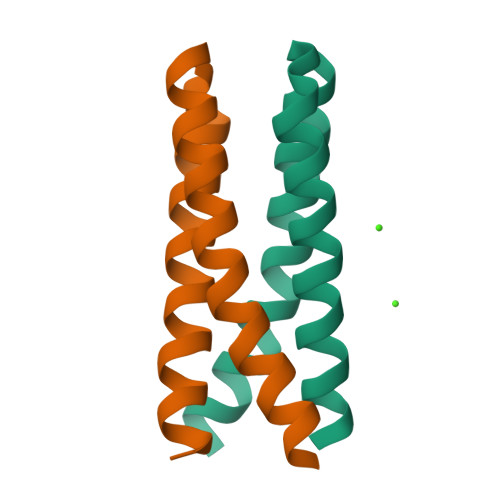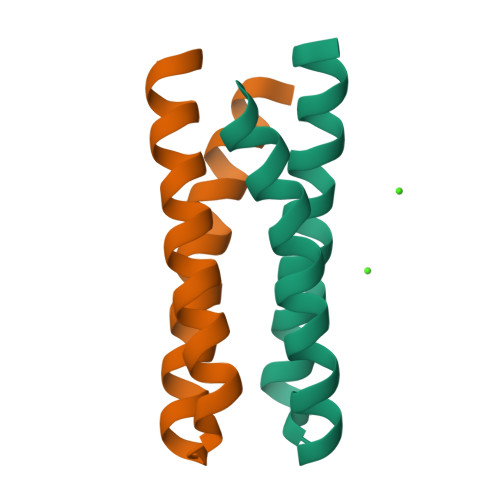Dramatic structural and thermodynamic consequences of repacking a protein's hydrophobic core.
Willis, M.A., Bishop, B., Regan, L., Brunger, A.T.(2000) Structure 8: 1319-1328
- PubMed: 11188696
- DOI: https://doi.org/10.1016/s0969-2126(00)00544-x
- Primary Citation of Related Structures:
1F4M, 1F4N - PubMed Abstract:
Rop is an RNA binding, dimeric, four-helix bundle protein with a well-defined, regular hydrophobic core ideally suited for redesign studies. A family of Rop variants in which the hydrophobic core was systematically redesigned has previously been created and characterized. We present a structural and thermodynamic analysis of Ala2Ile2-6, a variant of Rop with an extensively redesigned hydrophobic core. The structure of Ala2Ile2-6 reveals a completely new fold formed by a conformational "flip" of the two protomers around the dimeric interface. The free-energy profile of Ala2Ile2-6 is also very different from that of wild-type Rop. Ala2Ile2-6 has a higher melting temperature than Rop, but undergoes a slightly smaller free-energy change on unfolding. The structure of Ala2Ile2-6, along with molecular modeling results, demonstrate the importance of tight packing of core residues and the adoption of favorable core side chain rotamer values in determining helix-helix interactions in the four-helix bundle fold. Structural disorder at the N and C termini of Ala2Ile2-6 provides a basis for the large differences in the enthalpy and entropy of Ala2Ile2-6 folding compared with wildtype Rop.
Organizational Affiliation:
Department of Molecular Biophysics and Biochemistry, Yale University, New Haven, Connecticut 06520, USA.





















